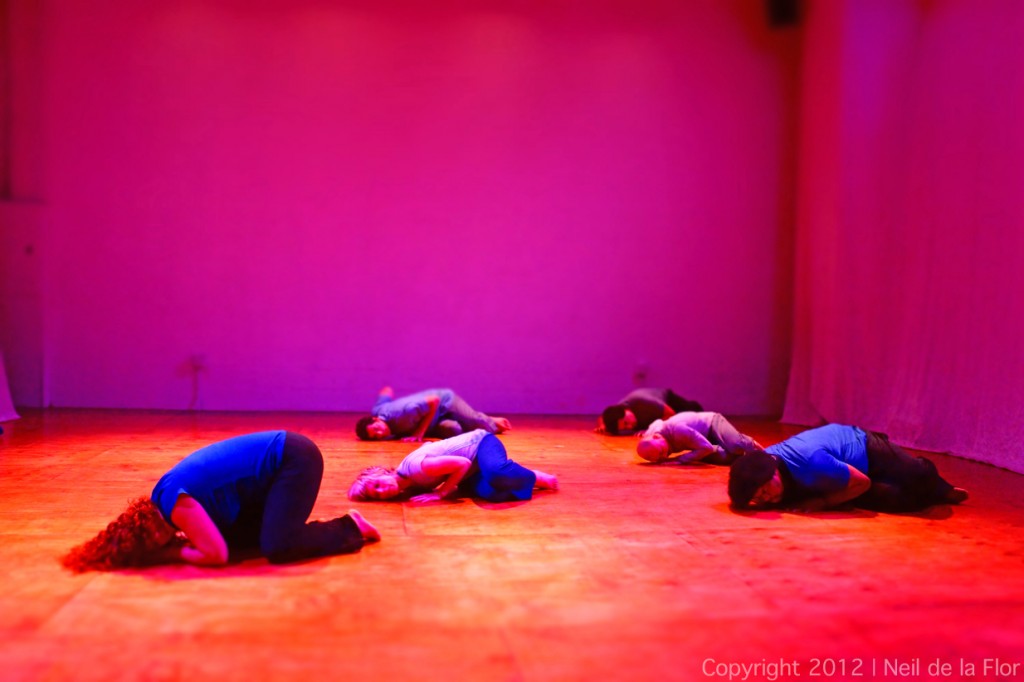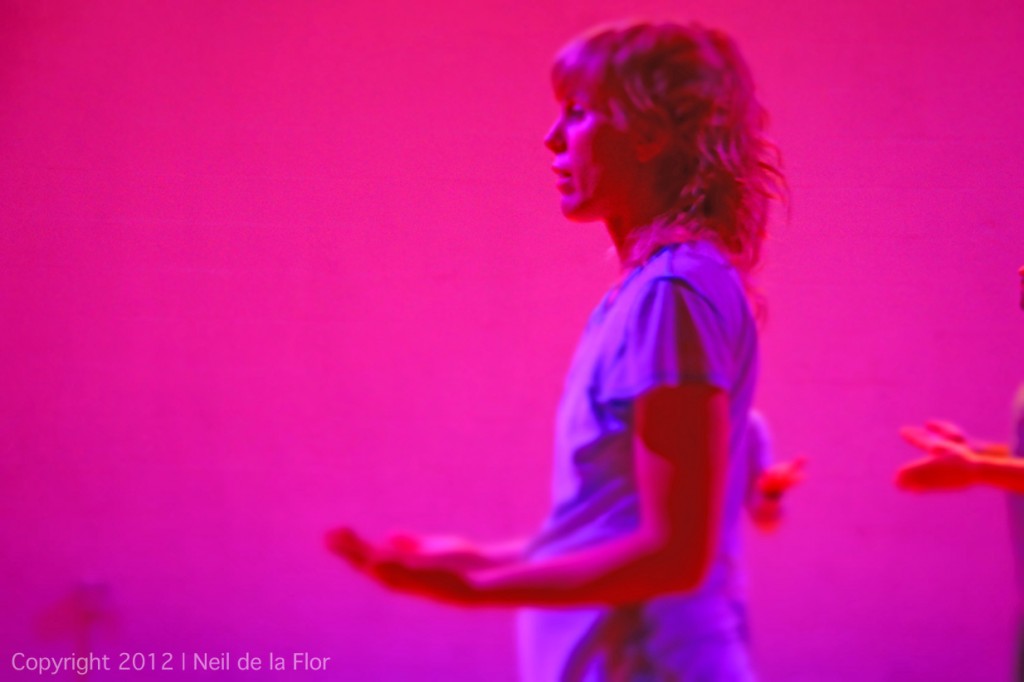
Jenny Larsson looks to voice
A few months ago, I saw Jenny Larsson’s “Look at how you’re looking at me when I’m telling you this,” featuring performers Celeste Fraser-Delgado, William Rey, Fernando Landeros, Oscar Fuentes, Matthew Taylor and Larsson. “Look at how you’re looking” is Larsson’s thesis project for her MFA in Performing Arts from the University of Wisconsin-Milwaukee. The presentation, which also included live sax and flute performed by Matthew Taylor, was part of Inkub8’s (open studio) series that explored our predilections for being seen and seeing others in stasis and in motion. I had the opportunity to interview Larsson post-performance, and that’s when I found out that she was also a few months pregnant at the time.
Neil de la Flor: “Look at how you’re looking…” engaged the audience’s senses through closeness—proximity between performer and performer, audience and performer, was reduced to almost nothing. Why so close?
Jenny Larsson: I want to bring the performers closer to their audience. I want my performers to talk about feelings and thoughts that most people have. I want to humanize the performers and erase the gap between performers and audience. Audience members appreciate being seen and talked to. Being involved intellectually and emotionally is a great way to acknowledge them as human beings, not just an “audience.” I still want to choreograph, meaning putting things together based on an artistic vision. But I do want my performers to create the material. They are my creative source. Part of that source will have to be there stories.
ND: Performance and pregnancy can be a challenge: did this alter or shape what you wanted to do for this work?
JL: No, not with this specific work. Because I specifically wanted the performers/artists to form and shape the work themselves, I never intended to teach them any movements or force the piece in to a specific movement style/category. And because I was working with non-dancers and basic pedestrian movements, I could handle that with ease although being pregnant.
Jenny Larsson. Photo by Neil de la Flor
ND: As an artist, how important is it for an audience to ‘get’ the theme of a particular performance, especially when the performance references important social and political issues?
JL: I am never that concerned about what the audience will “get” or interpret in my work. All artists have such unique voices that it would be impossible to communicate everything “efficiently” and clear to the audience. I see that as part of the mystique in creating art, even with political subjects. If the artist is trying so hard to reach out to the audience, the risk is that it would be a simplification of an artistic idea.
ND: I’m very interested in voice and how you use your mother-tongue, Swedish, in some of your work. How important is voice for you within the context of a dance piece?
JL: Voice can add important additional layers to a dance work. With my solo “Dig Where You Stand,” it was central to work with the Swedish language both in speech and singing; since the work interpreted my cultural and historical heritage. With “Look at how you’re looking at me when I’m telling you this,” we were working with words and stories as a tool to generate movements and a tool for us in the group to find common grounds. Words helped pushing the performance forward and offered an alternative thread to hold onto. I did not intend to speak Swedish, but felt frustrated with my English storytelling and ended up telling the same story twice, once in Swedish and once in English.
Jenny Larsson. Photo by Neil de la Flor
Using the voice makes performers human, the words also reach out to the audience in ways that dance might not. I like to use multimedia within my dance compositions; voice, video, live musicians, visual art, props, etc. This project focuses a lot on words as a mean of communication between the performers as well as transmitting a concept, a message, to the audience. I want the performers to acknowledge each other on stage, and that will have to be made through voice just as much as through physicality/touch.
ND: What’s next?
JL: I am preparing for a few projects that will take place in Sweden, hopefully in a near future. I am building conversations with people from my home town, were I want to come back and film “Dig Where You Stand” at certain sites that inspired the work from the very beginning. I also want to create workshops and material towards a performance between the indigenous people that lives in the region- the Sami, and the rest of the Swedes (like me). There is very little collaboration in between these societies and I believe in the power of conversations and arts as tools to build bridges between isolated or segregated groups like these. It is really a selfish project as well, because I simply want to learn more about the Sami’s cultural and historical traditions!
Visit Jenny Larsson at www.jennylarsson.org.
Recent Content
-
Artsarticle ·
-
Artsarticle ·
-
Artsarticle ·



